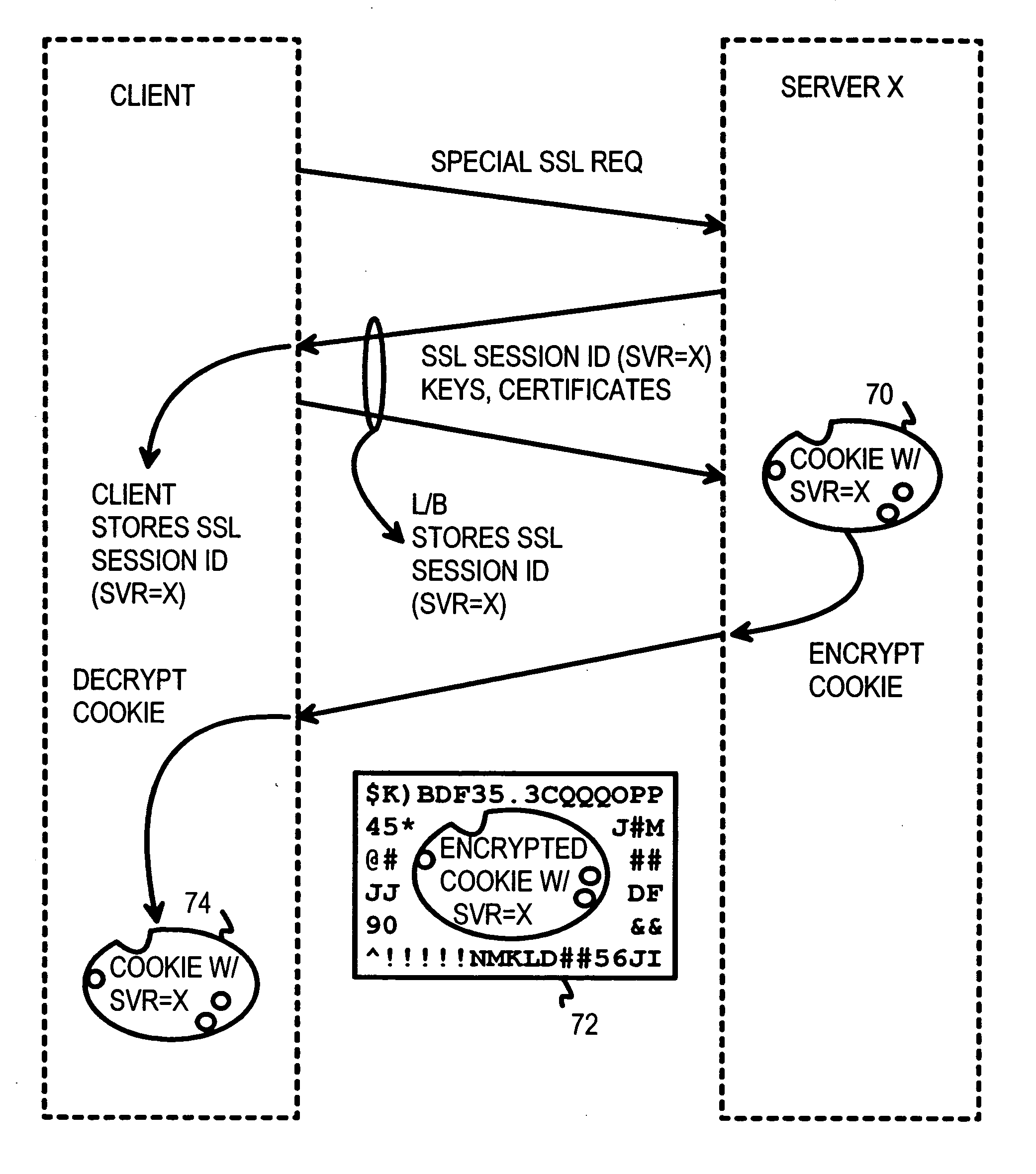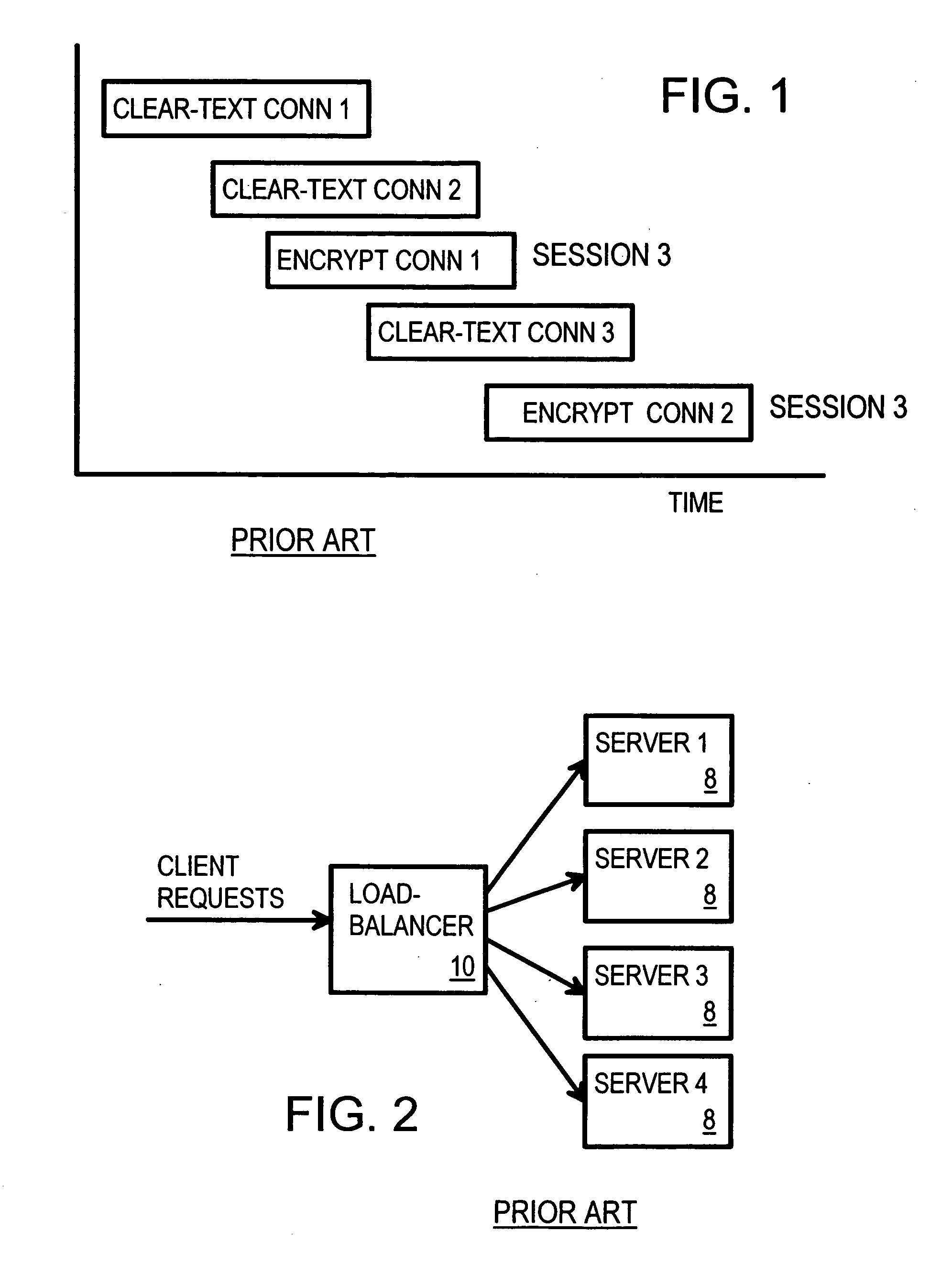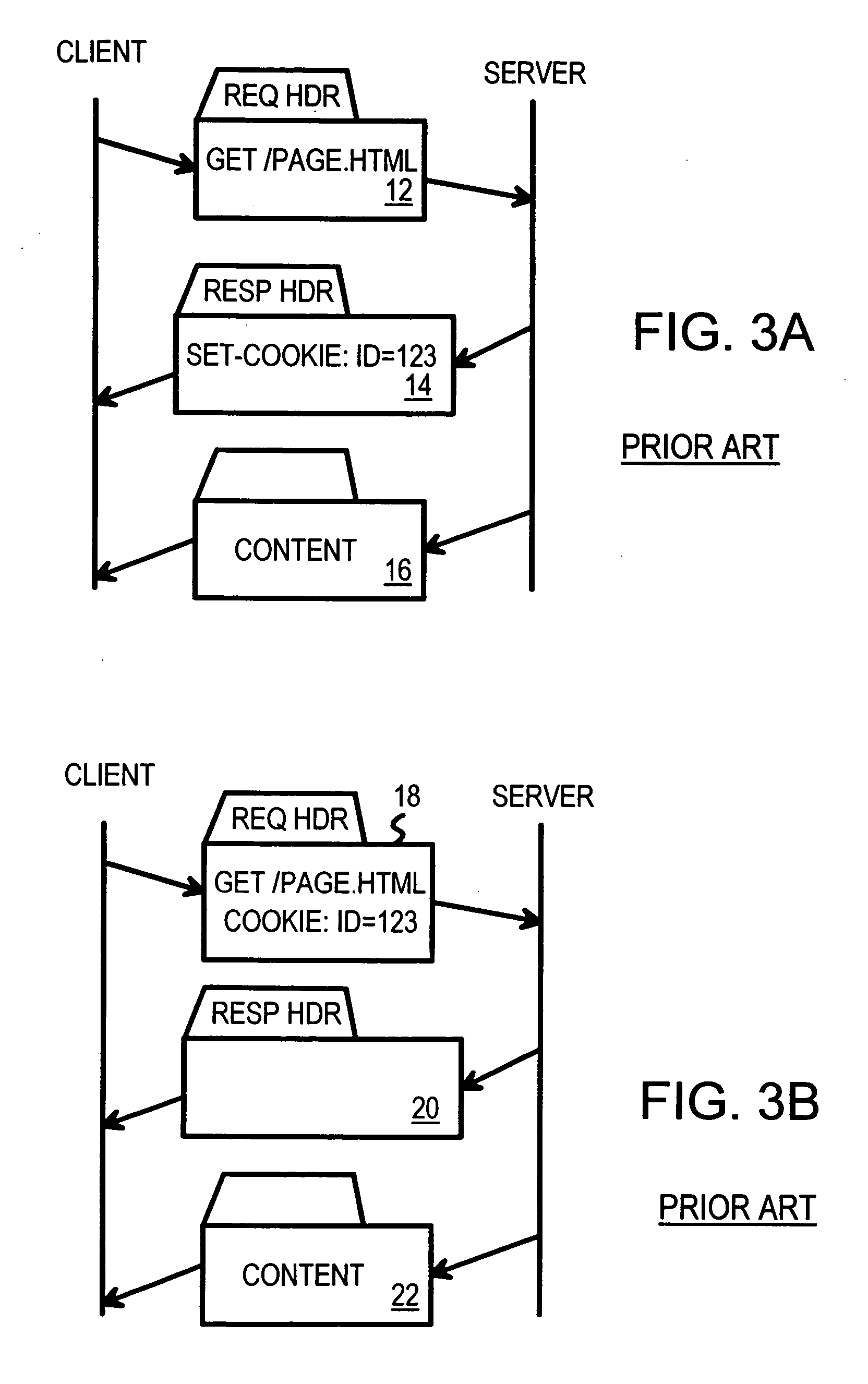Atomic session-start operation combining clear-text and encrypted sessions to provide ID visibility to middleware such as load-balancers
a clear-text and encrypted session technology, applied in the field of multi-server web sites, can solve the problems of server processing and server performance degradation, common encryption methods used today are resource-intensive, and servers that handle many simultaneous connections can suffer a significant performance degradation, so as to simplify the web-site architecture, reduce the likelihood of crashes and major configuration problems, and reduce the local network traffic
- Summary
- Abstract
- Description
- Claims
- Application Information
AI Technical Summary
Benefits of technology
Problems solved by technology
Method used
Image
Examples
Embodiment Construction
The present invention relates to an improvement in server load balancing. The following description is presented to enable one of ordinary skill in the art to make and use the invention as provided in the context of a particular application and its requirements. Various modifications to the preferred embodiment will be apparent to those with skill in the art, and the general principles defined herein may be applied to other embodiments. Therefore, the present invention is not intended to be limited to the particular embodiments shown and described, but is to be accorded the widest scope consistent with the principles and novel features herein disclosed.
The inventor has realized that a load balancer or other middleware can assign connections belonging to the same encrypted session to the same server based on the secure-sockets-layer (SSL) session ID. Since all encrypted connections for one client share the same SSL session ID, all encrypted messages are sent to the correct server....
PUM
 Login to View More
Login to View More Abstract
Description
Claims
Application Information
 Login to View More
Login to View More - R&D
- Intellectual Property
- Life Sciences
- Materials
- Tech Scout
- Unparalleled Data Quality
- Higher Quality Content
- 60% Fewer Hallucinations
Browse by: Latest US Patents, China's latest patents, Technical Efficacy Thesaurus, Application Domain, Technology Topic, Popular Technical Reports.
© 2025 PatSnap. All rights reserved.Legal|Privacy policy|Modern Slavery Act Transparency Statement|Sitemap|About US| Contact US: help@patsnap.com



